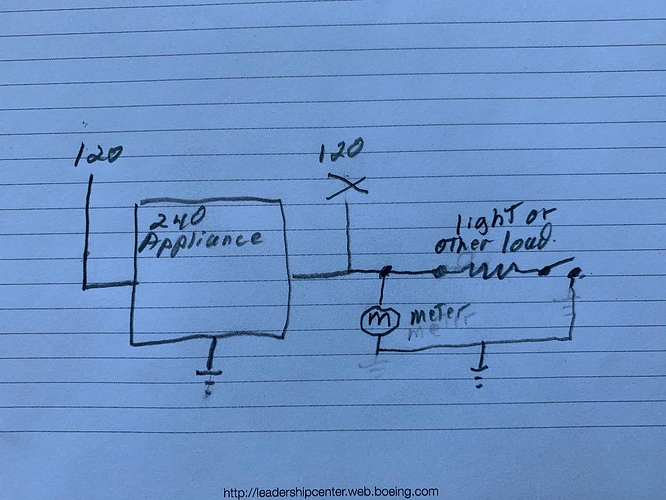I have 2 hot wires and a neutral wire going to a sub panel. One wire has 120 volts and the other wire has 111 volts. I have all breakers on the 120 volt line to get things working but if I use anything on the line with 111 volts nothing will work on that phase but the volts are still there. This happens with just one circuit on the line with 111 volts. I don’t understand where the problem could be. When I had circuits on the line with 111 volts as soon as I use ANYTHING on that circuit the circuit would die until I stop using it. I basically cant use anything on the phase with 111 volts.
Call an electrician - you should not have an odd voltage like 111.
Could be dangerous situation!
It is probably fine. It is with in 10% of 120 volts. Mine voltage varies from 112 to 126 volts and both legs are never the same.
Any reason why nothing would be working on that phase even though voltage is there?
Not that I can think of, unless the device is overly sensitive to low voltage.
Does a simple dumb light bulb work on that circuit?
A few lights would flicker and about 4 sockets just would not work when you plug something in. I tested it before I plug something in and its 111-114 volts and after I plug it in turn it on the flickering lights and the socket (and the other 3 sockets) I plugged the device in would have zero voltage until I turn the device off and this is with any device.
This is why i removed every breaker on that leg to the working one and there are no problems but I cannot use the stove are dryer as it needs both legs. I am thinking that maybe that leg has a loose connection in the sub panel from the main line cause the volts coming out of the service panel is 125 on both lines.
If you have 111 volts with no load and 0 volts with a load plugged in you have an serious issue. Possibly a loose or corroded connection, bad breaker,etc. You need to get a qualified electrician to check it out.
Do you have any 240 volt loads hooked up on the subpanel? If so, I would suspect that your “111 volt” leg is not actually connected to a source at all, and the 111 volt you see is actually residual voltage from the other leg of the 240 volt load. With the circuit open you would read through the 240 volt load with some sort of voltage drop depending on what the load is and how it is wired. When you put a load on your “111 volt” line, you are essentially grounding out that line thru the load and the voltage will drop to zero or near zero. At any rate, get a qualified electrician to look at it! (excuse my poor drawing abilities)
A footnote (NEC 210-19 FPN No. 4) in the National Electrical Code states that a voltage drop of 5% at the furthest receptacle in a branch wiring circuit is acceptable for normal efficiency. In a 120 volt 15 ampere circuit, this means that there should be no more than a 6 volt drop (114 volts) at the furthest outlet when the circuit is fully loaded. It also means that the circuit has a resistance that does not exceed 0.4 ohms.
What causes “excess voltage drop” in a branch circuit ? The cause is usually:
- High resistance connections at wiring junctions or outlet terminals, usually caused by:
- poor splices anywhere in the circuit
- loose or intermittent connections anywhere in the circuit
- corroded connections anywhere in the circuit
- inadequate seating of wire in the slot connection on backwired “push-in type“ receptacles and switches.
- The wire does not meet code standards (not heavy enough gauge for the length of the run).
I am not using anything on the 111 volt leg as nothing will work on it and I get roughly 230-235 across both. I also verified that 120 is coming from the service panel there is only a drop in voltage at the connection to the sub panel. I still suspect its a loose connection on that leg or possibly that wire being defective.
Are ALL your neutrals connected at the panel? If not, it’s floating voltage.
Are the 2 hot wires coming through different breakers? If yes, could be a bad breaker.
